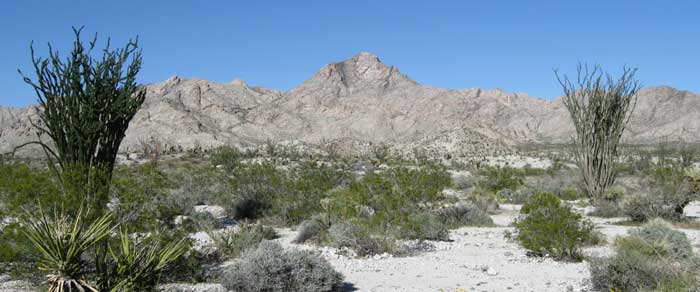^Leafy Ocotillos (Fouquieria splendens) frame Chemehuevi Mountain.
Land of Ocotillos and Granite
Spring 2009, By LMC
It's nice to report some good news in the deserts, and we found it at the Chemehuevi Mountains.
Mid March: the rains had been patchy this winter, and parts of the northern Mojave went dry. So we went south to explore a range next to the Colorado River.
At 85,801 acres, Chemehuevi Mountain Wilderness is a large and beautiful area of Colorado Desert at it transitions into the southern Mojave in San Bernardino County 12 miles southeast of Needles, California. From Highway 95 we drove onto the dirt powerline road just north of Havasu Lake Road, and picked a spot to park south of the peak, our goal.
Creosote bushes were in full flower and the catclaw acacias (Acacia greggii) were just leafing out. House finches (Carpodacus mexicanus) flew between Desert lavender (Hyptis emoryi) shrubs to dine on flowers and seeds. A Mockingbird (Mimus polyglottos) sang loudly. Black-throated sparrows (Amphispiza bilineata) were numerous, and a few Verdins (Auriparus flaviceps) and Phainopeplas (Phainopepla nitens) also made their appearance.
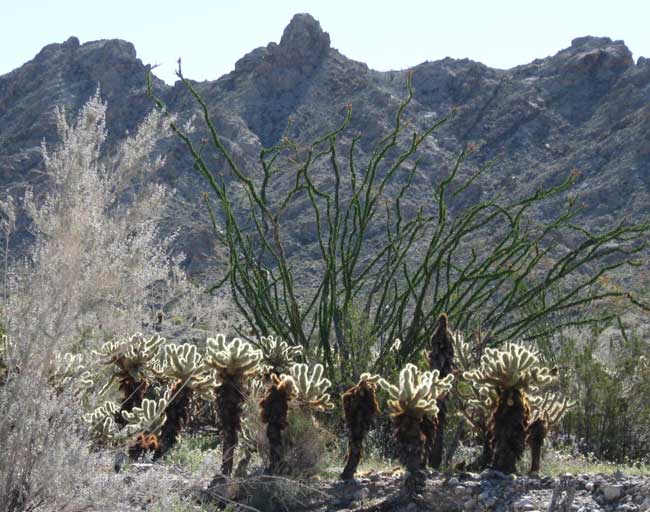
^The gray felty foliage of Desert lavender shrubs (Hyptis emoryi), Ocotillos, and Teddybear chollas (Cylindropuntia bigelovii) form a rich desert community on the fans and foothills of the range.
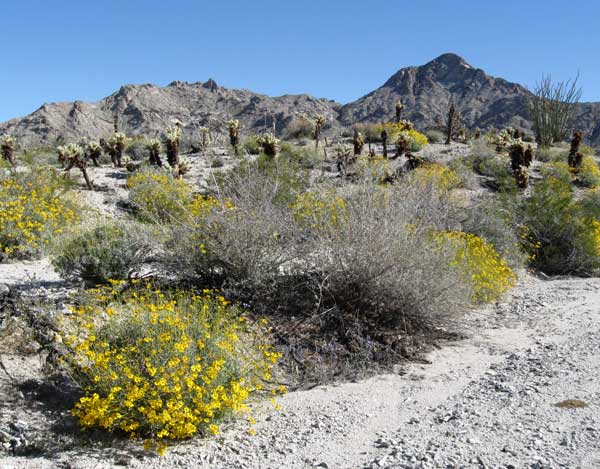
We walked up washes and over little hills with blooming Brittlebush (Encelia farinosa), toward the peak. Zebra-tailed lizards (Callisaurus draconoides) skittered across the gravel. Unfortunately some washes had a track or two of a truck off-roading a half mile or more into the wilderness.
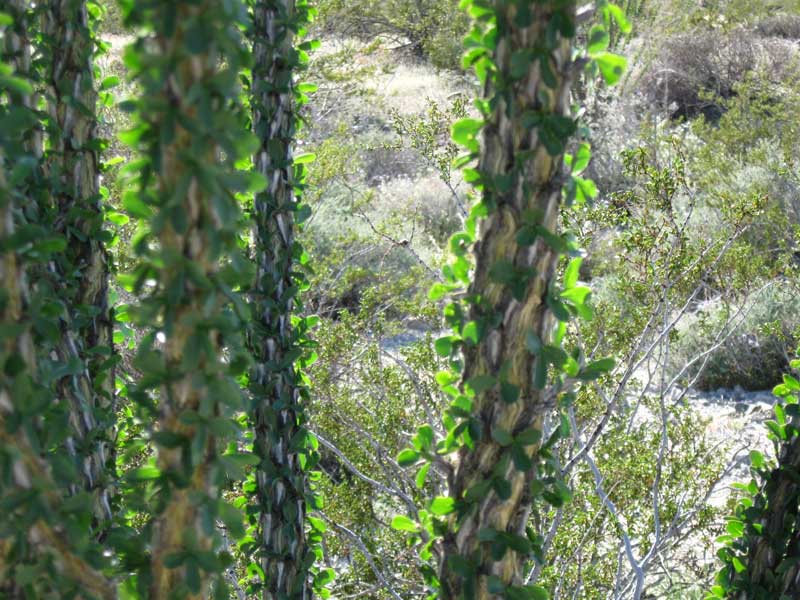
^A Forest of leafy Ocotillo stems, woody and thorny. Leaves sprout out of the branches a few days after each good rain, then drop off after the soil dries. As main leaves fall, the petioles grows into spines, renewing the armor of these strange plants.
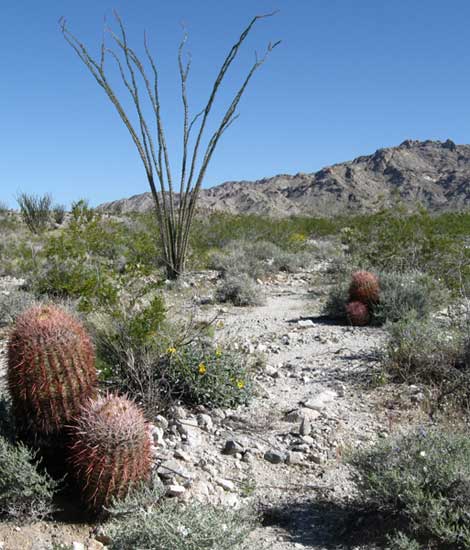
^Ocotillo surrounded by Barrel cacti (Ferocactus cylindraceus).
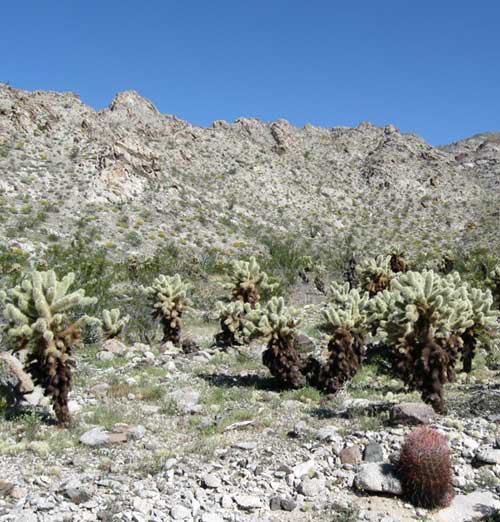
^We approached the granitic mountain slope, but must walk carefully between stands of Teddybear cholla with their "jumping" spine branches. "Jumping chollas" are a good nickname: I cringed as my friend ahead of me walked past a fallen cholla joint, which seemed to flip up from his ankle and land on his bare leg as if it aimed itself -- we had to stop and delicately extricate the painful arm of hooked spines. This is a good way the cactus uses to distribute itself on the legs of passing animals, so it can root in a new place, but not fun for the animal!
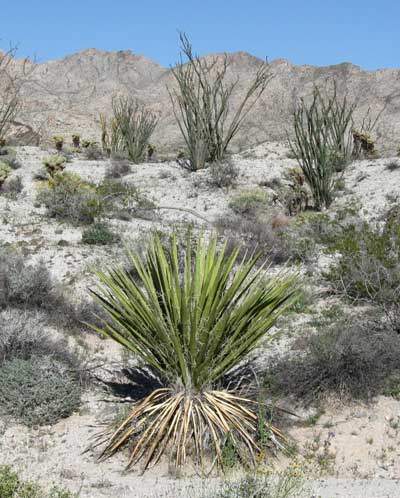
^Scattered Mojave yuccas (Yucca schidigera) show we are near the Mojave Desert to the north.

^Spectacular penstemons (Penstemon pseudospectabilis) blossom in the gravel washes near the canyons.
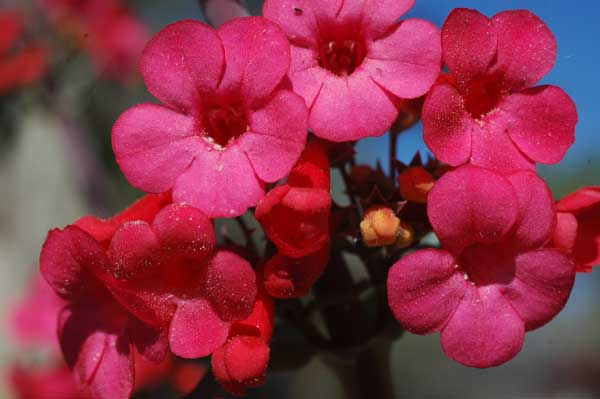
^Penstemon close-up. The desert reveals hidden wonders when you pause to look.
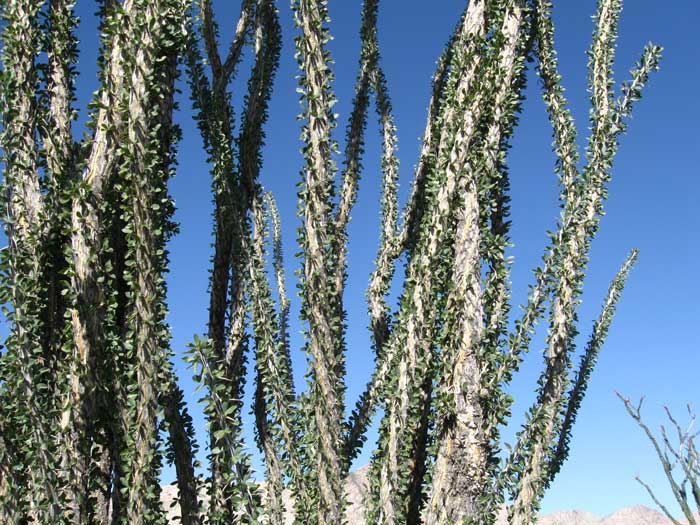
^Ocotillo branches.
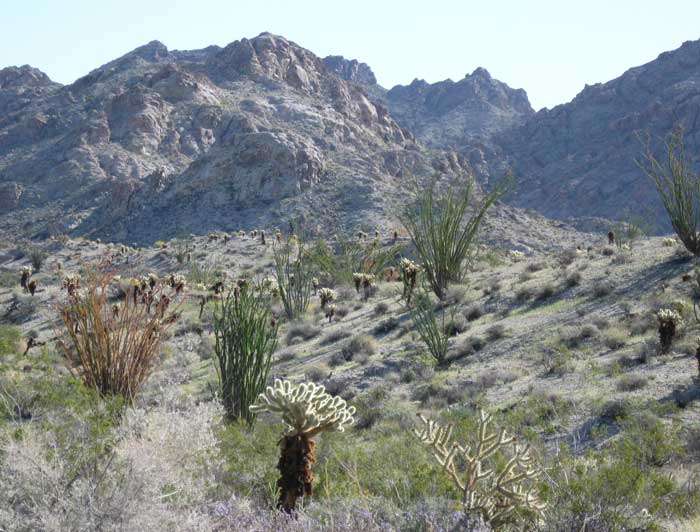
^At the base of the range. A Buckhorn cholla (Cylindropuntia acanthocarpa var. coloradensis) grows next to a Teddybear.
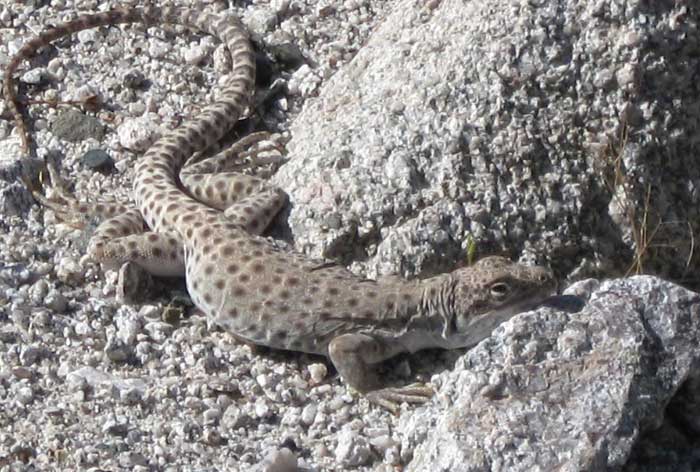
^In the morning a Leopard lizard (Gambelia wislizenii) basks in the sun of a wash to get ready for a day of hunting other lizards.
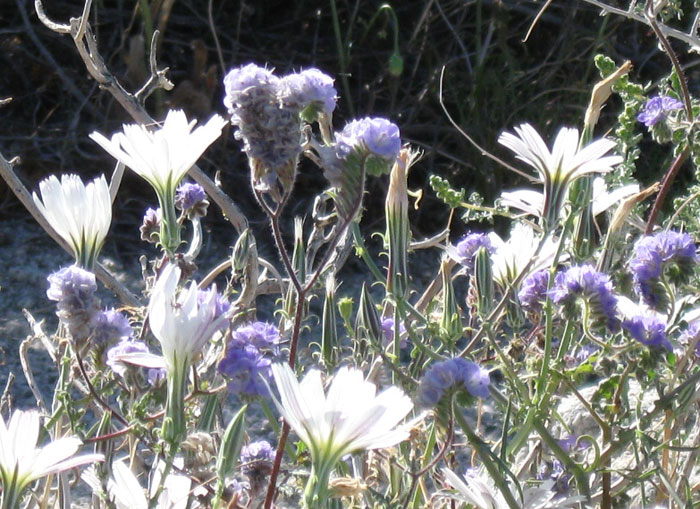
Lace-leaf phacelia (Phacelia distans) and white Desert chicory (Rafinesquia neomexicana).
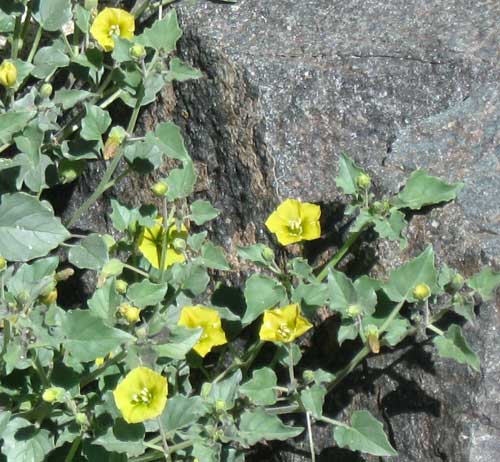
^Ground-cherry (Physalis crassifolia), related to tomatillo.
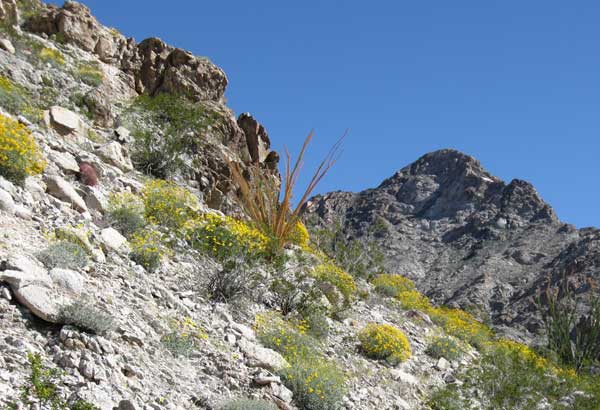
^Colorful yellow-flowering Brittlebushes cover the lower canyon slopes along with Ocotillos.
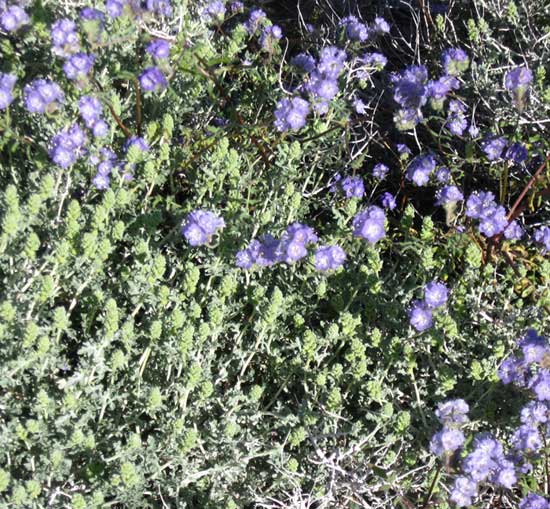
^Lace-leaf phacelia grows among the branches of a Bursage (Ambrosia dumosa) with green flower-heads.
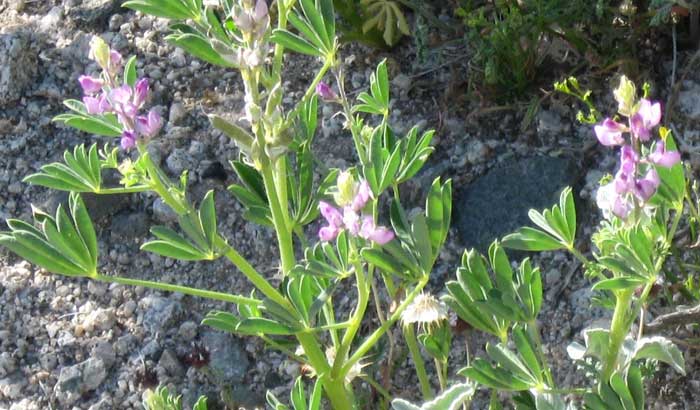
^Arizona lupine (Lupinus arizonicus). The washes also had numerous animal tracks: Coyote (Canis latrans), a few other hikers, but also a possible Yuma mountain lion (Felis concolor browni), perhaps out hunting for Burro deer (Odocoileus hemionus eremicus), the hard-to-see desert form of Mule deer in the area.
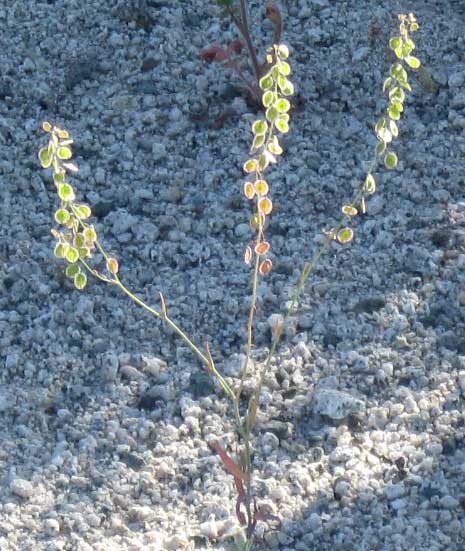
^Fringepod (Thysanocarpus curvipes) in a wash, showing its backlit round seed-pods. This plant is in the mustard family. More good news: we found very few introduced weedy plants in the wilderness, only a few Arabian splitgrass (Schismus sp.) in low numbers and couple of Sahara mustards (Brassica tournefortii) along the dirt road as it crossed a wash.
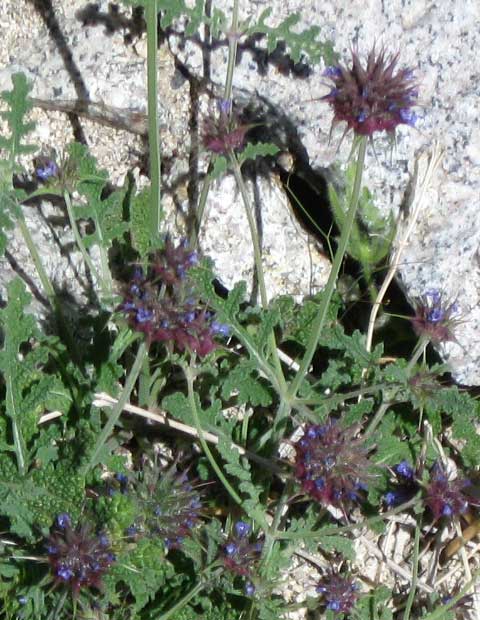
^Chia (Salvia columbariae). The seeds of this small annual were (and still are) collected by Native people to make delicious and nutrient-filled flour and cakes. I can attest to their good flavor after experimenting with making chia cakes in the past.
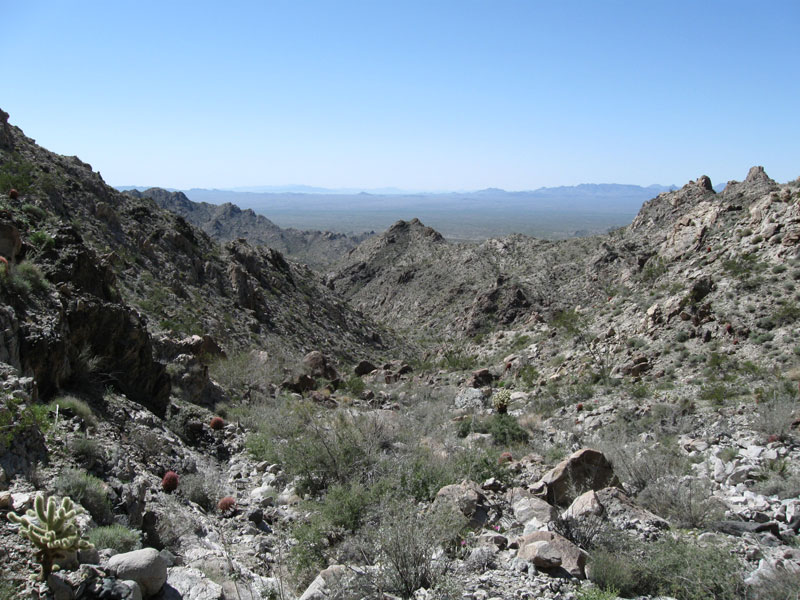
^We climbed up this rocky rugged canyon to get to the ridge, but it was not easy. Rock wrens (Salpinctes obsoletus) and Canyon wrens (Catherpes mexicanus) sang to us as we picked our way slowly through the boulders and thorny acacias.
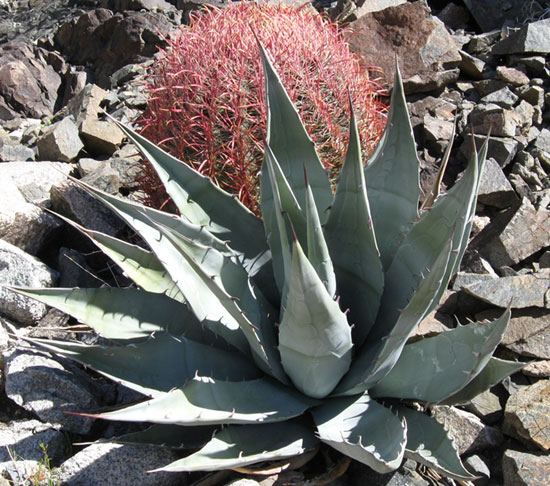
^But the plant-life was worth the effort: Desert agaves (Agave deserti var. simplex) and Barrel cacti grew among the rocks.
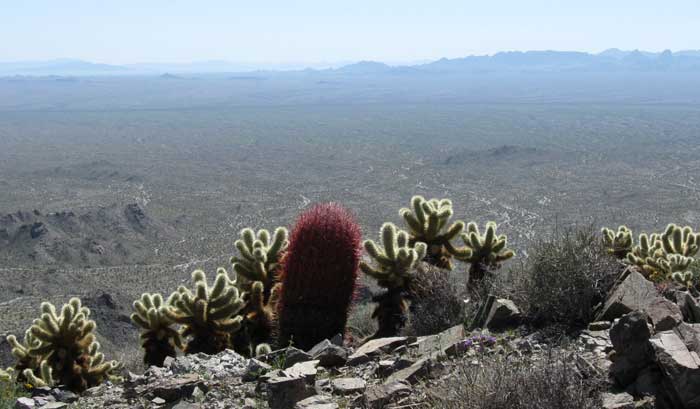
^Teddybear chollas and Barrel cactus on a ridge overlooking Chemehuevi Valley towards the Old Woman Mountains.
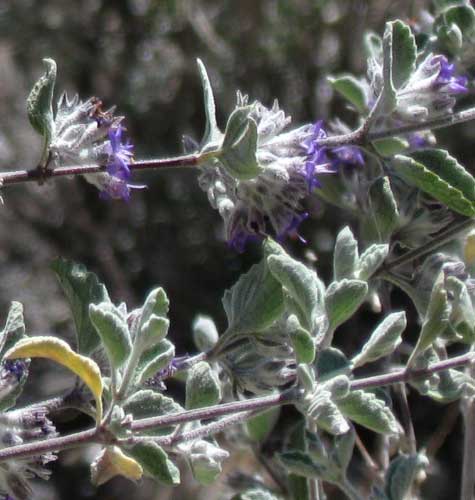
^Desert lavender (Hyptis emoryi) flowers on tall shrubs along the dry washes and canyons. This plant is related to sages and mints, and the blossoms had a pungent aroma.
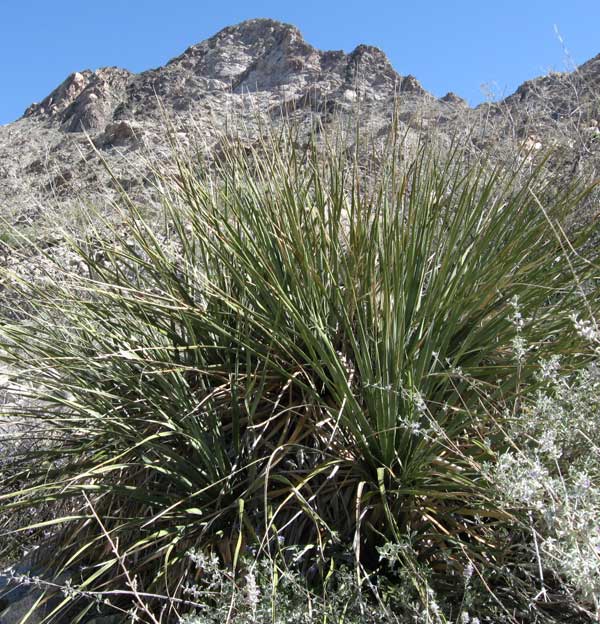
^We met Bigelow nolinas (Nolina bigelovii) in the stony canyon. Related to yuccas but with thin leaves, these plants will send up man-sized flowering stalks later in the spring.
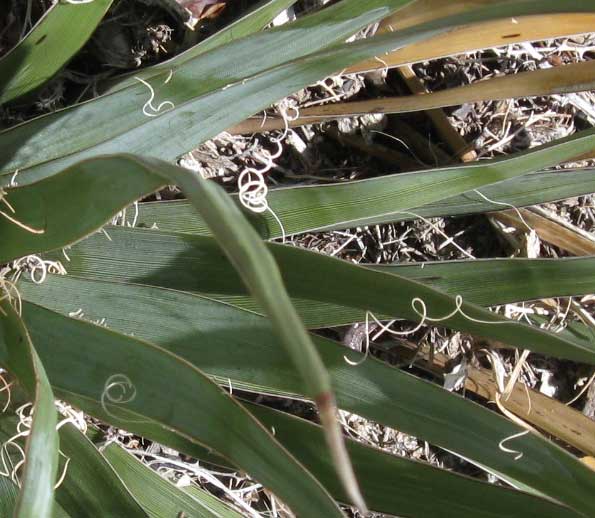
^Nolina leaves.
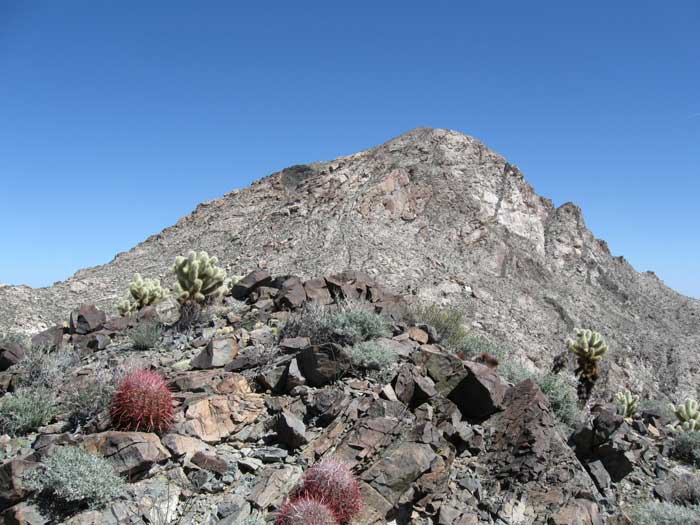
^After a long climb, we look up at the peak, still a ways away.
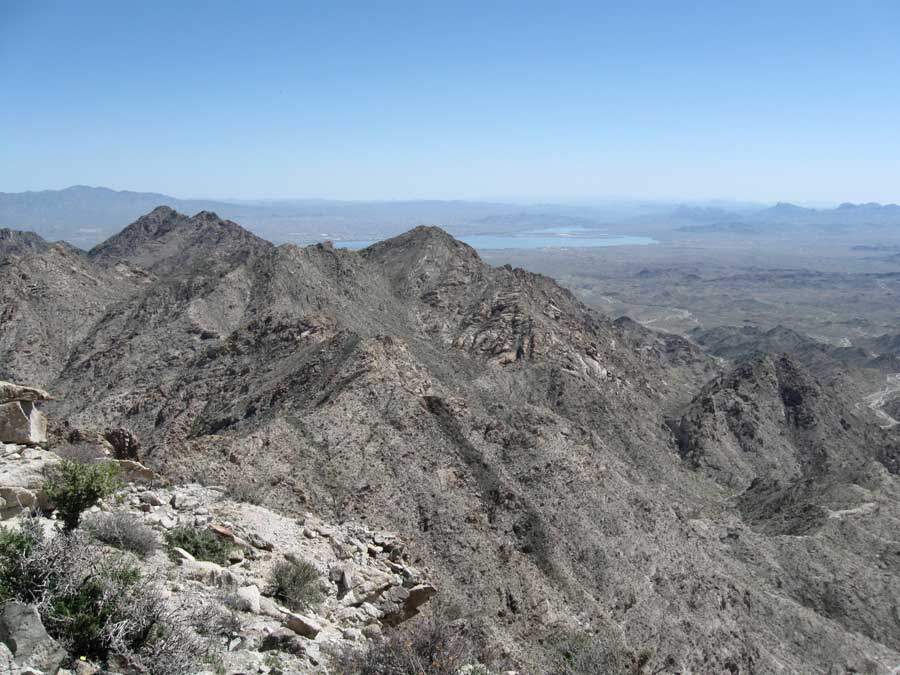
^From the top the views are incredible. The Colorado River at Lake Havasu snakes its way southward in the distance. At 3,694 feet elevation, the peak rises steeply from the 500-foot level of the river.
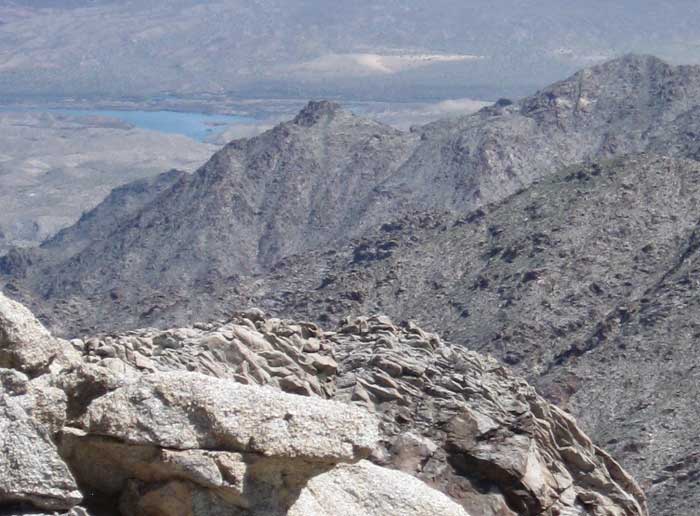
^Wilderness of rocky canyons down to the Colorado River.

^An agave grows near the peak. A few Bighorn sheep (Ovis canadensis) beds lay nearby. Two Golden eagles (Aquila chrysaetos) wheeled overhead, as White-throated swifts (Aeronautes saxatalis) cut the air in fast flight.
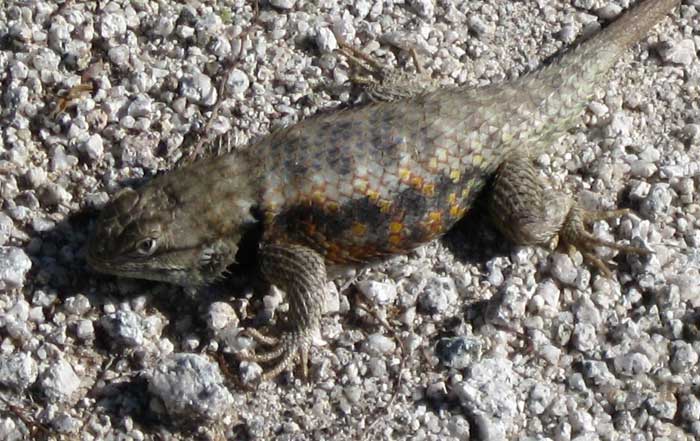
^A rock-loving Desert spiny lizard (Sceloporus magister) hugs the ground for warmth.
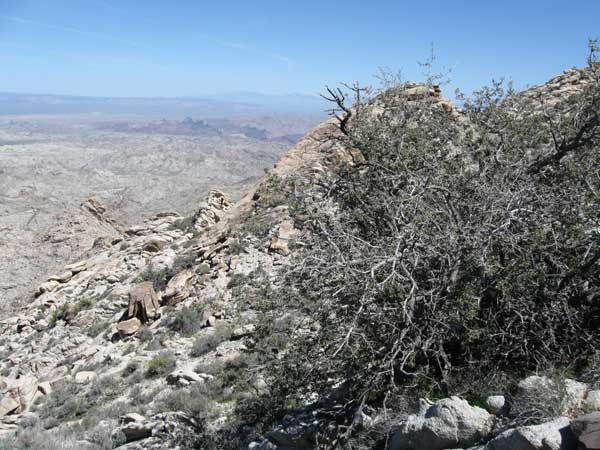
^We saw a single Scrub oak (Quercus turbinella) hanging on to a north-facing slope of the peak.
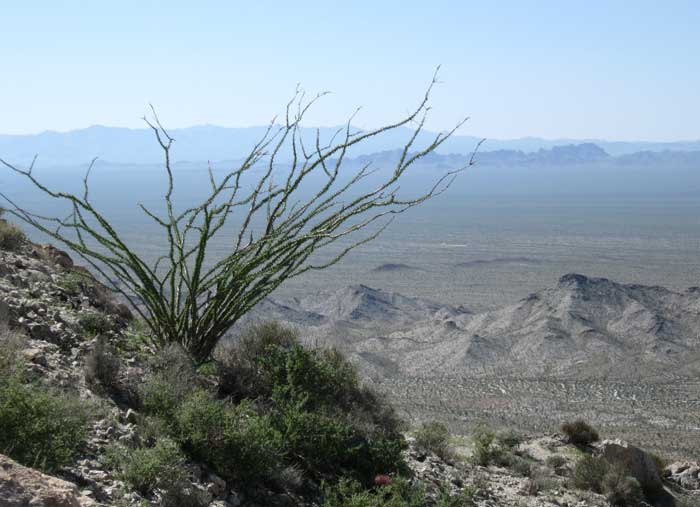
^Ocotillo view looking northwest, on the way down.
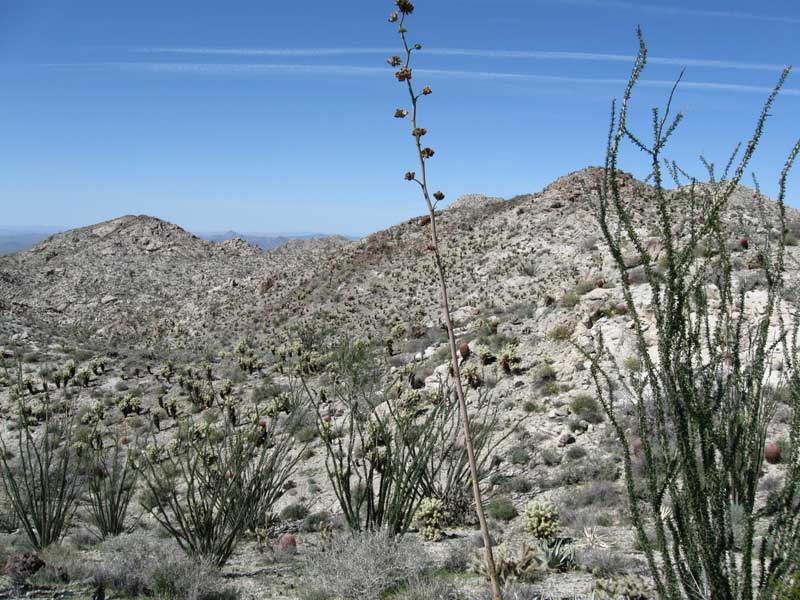
^The top of the range was dense with agaves, ocotillos, and chollas, almost difficult to walk through without getting caught in spines.
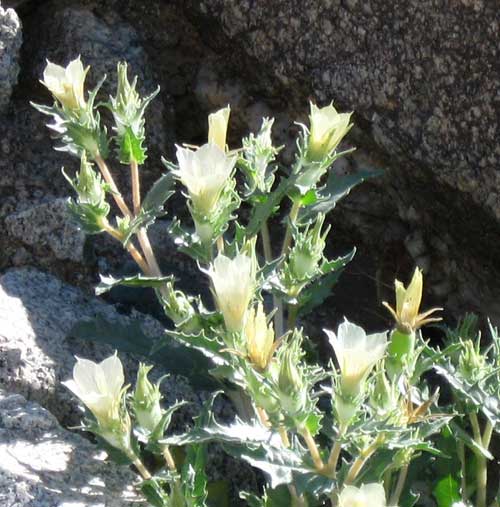
^Blazing star (Mentzelia involucrata).

^Wanting to avoid going back by way of the tough canyon, we took an alternate route down the northwest side of the range through beautiful cholla forests. But this turned out to be just as tricky, negotiating many giant dryfalls and cliffs, hidden from view until you reached the edge.
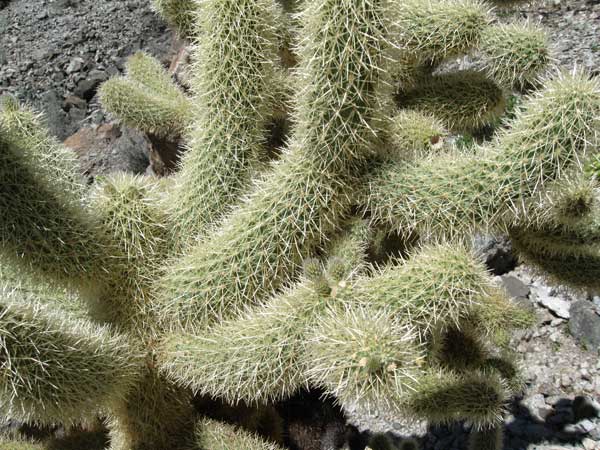
^Teddybear cholla up close (but not too close), showing its armor.
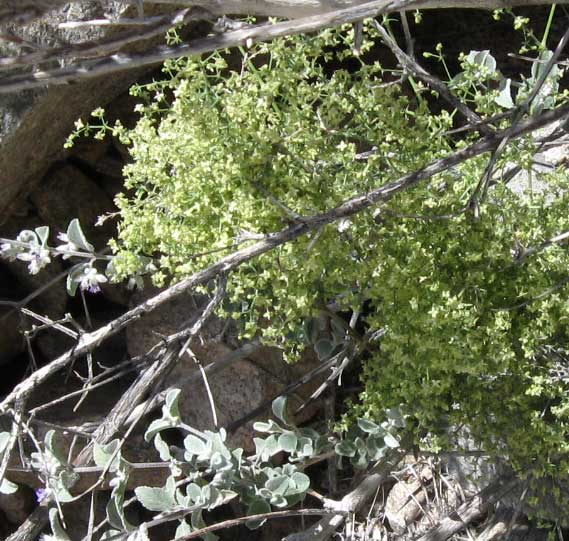
^As a contrast to the spiny chollas, we found a soft delicate plant called Bedstraw (Gallium sp.) growing under the shelter of a Desert lavender.
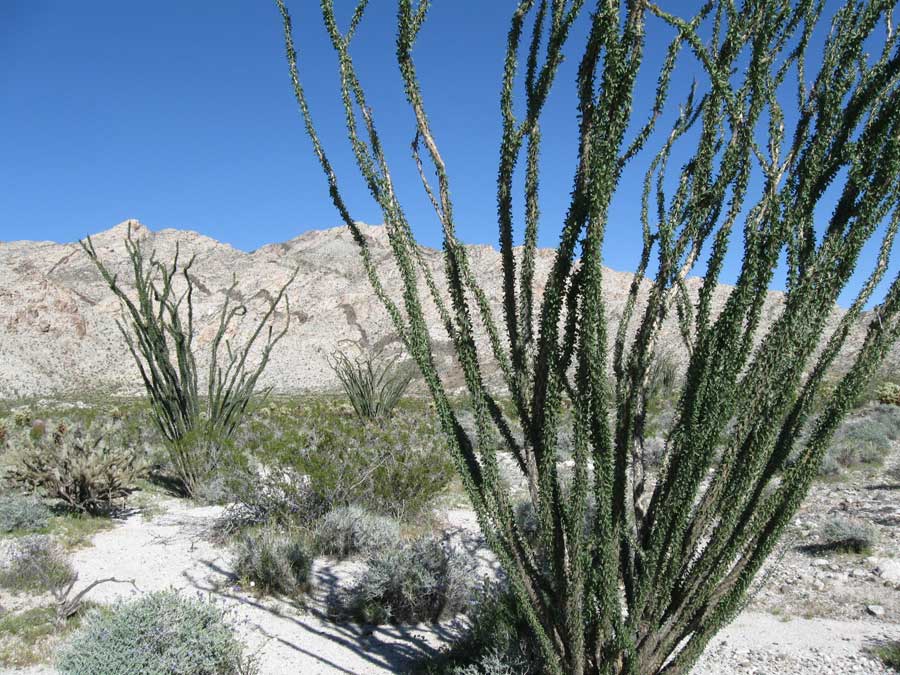
^With sore feet from the climb, we returned across the washes and fans among the ocotillos.
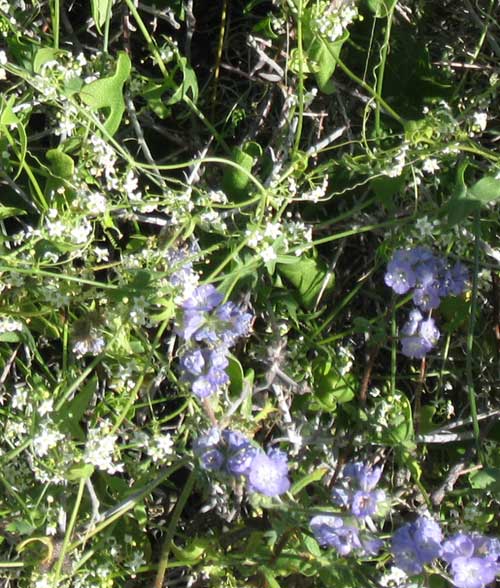
^Phacelias among an odd desert vine in the gourd family, Brandegea (Brandegea bigelovii), growing from a taproot in a wash and climbing over a shrub after rains. Its flowers are white.
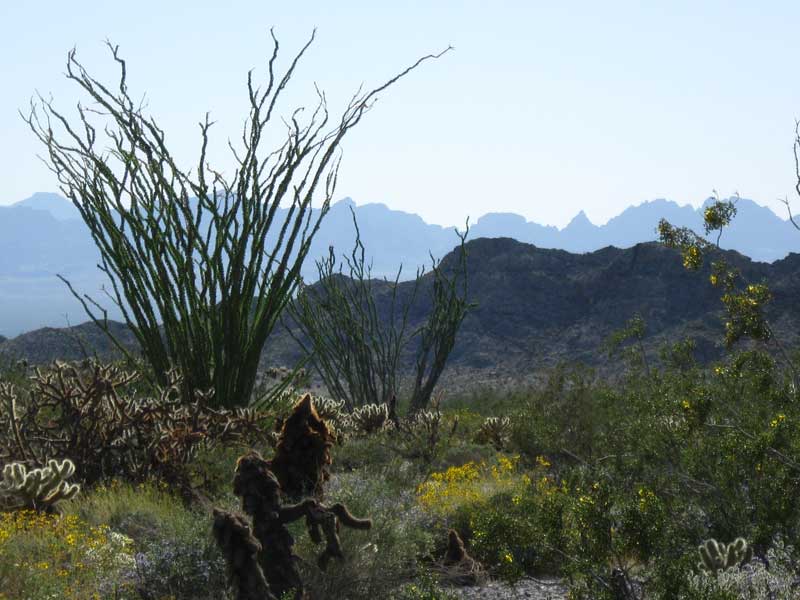
^Sunset in the Colorado Desert.
Not Just a Wilderness
People have used these lands for thousands of years. Recently the Cultural Conservancy helped the Chemehuevi and Southern Paiute people to preserve their sacred storyscapes, which include the mountains, valleys, and Colorado River area all around Chemehuevi Mountain: the Salt Song Trail Project.
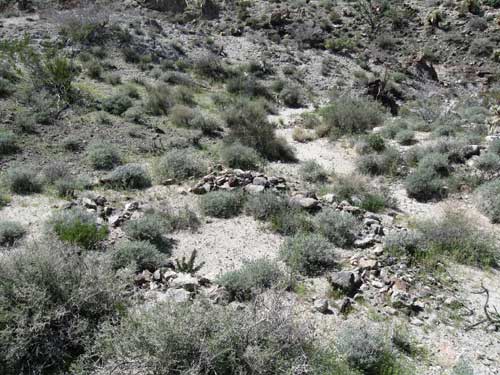
^Old agave roasting pit in the Chemehuevi Mountains? Agave hearts are a great food source, and have been collected for thousands of years in the southern deserts.
Malki Museum, Banning, California -- Agave roast.
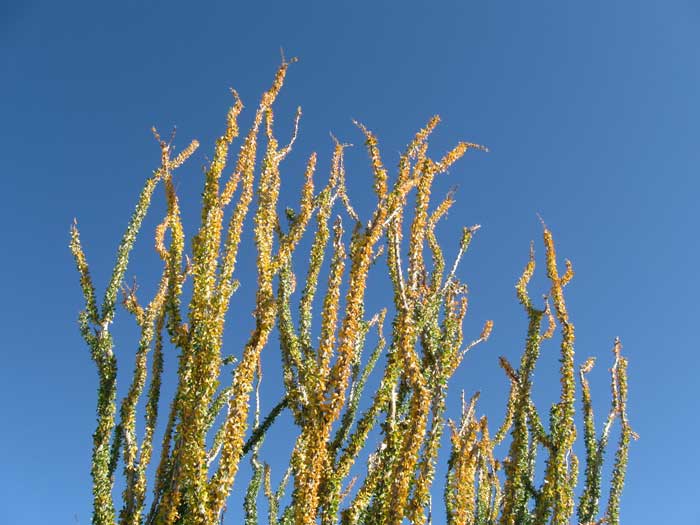
^Ocotillo leaves beginning to turn yellow as the desert dries out. The plant is deciduous, but will resprout new leaves if another good rain occurs.
BLM Needles Office >>here.
